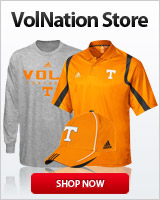Orange defense
Blood runneth orange in my veins
- Joined
- Apr 1, 2017
- Messages
- 11,010
- Likes
- 12,724
There’s Tax man problems.
Aggieland was stunned when Texas A&M’s 12th Man+ fund, one of the biggest NIL fundraising operations in the country, was abruptly shut down for legal purposes.
The problems started when the IRS sent out a memo in early June stating that NIL Collectives can’t qualify as 501©(3) nonprofits, and thus should not enjoy tax-exempt status, which is exactly what the 12th Man+ fund had been doing.
There’s playing time problems.
A study of what happens to portal kids which is driven by NIL money shows
72% of portal transfers play few snaps than their previous school.
37% did not start a game.
G5 to P5 transfers rarely get the same snap time as they did with G-5 schools.
Higher profile HS recruits are growing in numbers at G5 schools due to lack of available spots on P5 rosters.
Post season coaching changes can severely handicap new coaches who miss the portal. Scholarship players leave and the new coach can see a good team turn bad quickly.
A small study of 104 G5 athletes playing 500 snaps or more had only 13 match snaps going to P5. The average had their snaps by over half.
Most G5 schools are working with limited NIL money. Tulane mentioned as having a $1.5 million war chest.
Biggest P5 is Texas with $19.9 million
UCF $2.5. Vandy $2.4. Cincy $1.9. Houston. $1.5. SMU. $2.1. Boise $2.0
With these numbers only NIL potential makes the poor odds worth it.
Silverfield seems to looking pretty savvy finding lower G5 transfers.
Anybody know what the 901 Fund war chest totals?
Aggieland was stunned when Texas A&M’s 12th Man+ fund, one of the biggest NIL fundraising operations in the country, was abruptly shut down for legal purposes.
The problems started when the IRS sent out a memo in early June stating that NIL Collectives can’t qualify as 501©(3) nonprofits, and thus should not enjoy tax-exempt status, which is exactly what the 12th Man+ fund had been doing.
There’s playing time problems.
A study of what happens to portal kids which is driven by NIL money shows
72% of portal transfers play few snaps than their previous school.
37% did not start a game.
G5 to P5 transfers rarely get the same snap time as they did with G-5 schools.
Higher profile HS recruits are growing in numbers at G5 schools due to lack of available spots on P5 rosters.
Post season coaching changes can severely handicap new coaches who miss the portal. Scholarship players leave and the new coach can see a good team turn bad quickly.
A small study of 104 G5 athletes playing 500 snaps or more had only 13 match snaps going to P5. The average had their snaps by over half.
Most G5 schools are working with limited NIL money. Tulane mentioned as having a $1.5 million war chest.
Biggest P5 is Texas with $19.9 million
UCF $2.5. Vandy $2.4. Cincy $1.9. Houston. $1.5. SMU. $2.1. Boise $2.0
With these numbers only NIL potential makes the poor odds worth it.
Silverfield seems to looking pretty savvy finding lower G5 transfers.
Anybody know what the 901 Fund war chest totals?




